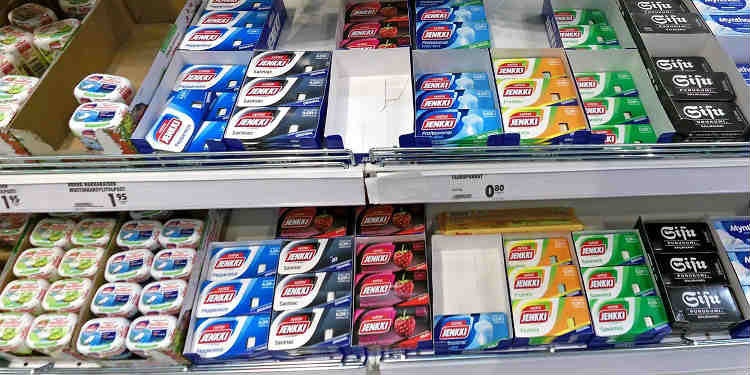Xylitol and Dogs Don’t Mix
By: Dr. Ryan Llera, B.Sc., DVM | Sep 12, 2017

There has been lots of talk lately about xylitol, a dangerous (for dogs) ingredient in some common household items, namely peanut butter which you might share with your dog or sugar-free chewing gums. Other items lying around the house may include nicotine gum, mints, and oral care products such as dry mouth treatments and toothpaste – essentially items that are considered “sugar-free.” In browsing the aisles at my local store, I fortunately only found the gum and dry mouth treatments available containing xylitol. So fear not! Eleven different brands of peanut butter and not a single one contained xylitol so your pooch won’t have to go without a treat or help in giving pills. But what really is the big deal? Why is this so alarming? A friend of a friend recently lost a dog to xylitol poisoning so I’m going to take this time to explain it simply and help you keep your pet out of trouble.
The two main problems noted from exposure are low blood sugar and possible liver failure. Xylitol causes a surge of insulin release thereby dropping the body’s blood sugar levels and the result is a seizure. The mechanism of how it happens is not known fully but the liver can enter into a state of necrosis (tissue death) or failure. This leads to a cascade of possible events including haemorrhage and disseminated intravascular coagulation (DIC) – which in itself causes multiple organ failures.
So how much is too much? Using gum as an example, 1-2 pieces could cause problems with a small breed dog (<5kg). For larger dogs, you’d be looking at closer to 6-7 pieces for a labrador-sized dog (~35kg). This is assuming a piece of gum has 1-2 grams per piece (info from ASPCA Animal Poison Control Center). Unfortunately, companies are very protective about this information so it’s difficult to say how much peanut butter or toothpaste a dog would have to ingest to show clinical signs.
Xylitol is, unfortunately, a fast-acting toxin for dogs and they can begin to show signs within hours, or in the worst cases, die within a couple of days. If you suspect your dog has ingested products with xylitol, it’s imperative to get them seen by a veterinarian as soon as possible. A Pembroke Welsh Corgi I once saw had ingested an entire pack of chewing gum (10 pieces) and despite making him vomit within a few hours of eating it, he still had an increase in his liver values and low glucose levels so he required hospitalization and eventually recovered fine. Delays in treatment could be costly, both health-wise and financially.
Here are some suggestions to help prevent accidental exposures. First, read the label of anything you might give your pet; yes even peanut butter! This goes along with the idea that things good for people aren’t always good for pets so you should never give any medication over the counter without consulting your vet. Secondly, keep those packs of gum (or toothpaste) out of reach! Animals sense of smell is remarkably better than a humans so they will find it. In general, think of your dog in the same sense as if you were child-proofing a house.
As xylitol may become used more widely and until the dangers are more well known, be sure to be extra cautious with anything your dog might eat. As of this time, there is not enough information to know how xylitol affects cats. Here are a few resources and final notes:
- Peanut butter’s including xylitol: Nutty by Nature from Krush Nutrition, P28, Hanks Protein Plus Peanut Butter, Go Nuts Go, and Nuts ‘N More (found on multiple sites including DVM360 and PreventiveVet.com)
- A list of other products containing xylitol
- Petitions to help encourage companies to disclose more info about xylitol in their products
- The ASPCA Animal Poison Control Center with a searchable database on pet toxicities
Please help get the word out about the dangers of xylitol and share this article.


Disclaimer: healthcareforpets.com and its team of veterinarians and clinicians do not endorse any products, services, or recommended advice. All advice presented by our veterinarians, clinicians, tools, resources, etc is not meant to replace a regular physical exam and consultation with your primary veterinarian or other clinicians. We always encourage you to seek medical advice from your regular veterinarian.

